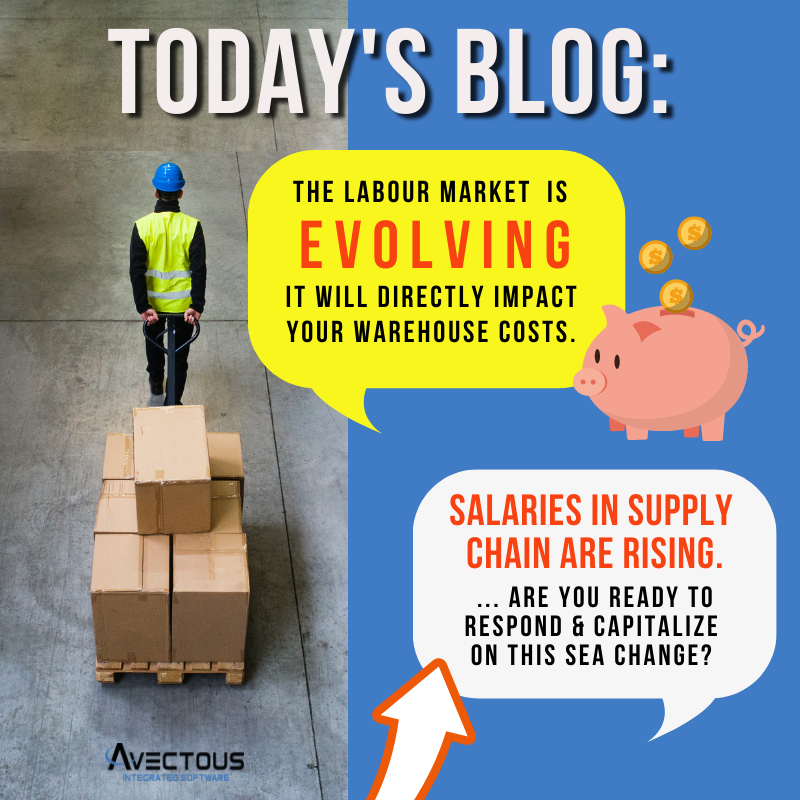As the economy awakens from a sluggish Covid slumber, the job market is evolving in ways that economists haven’t seen in decades. The supply chain industry is not immune to this shift – in fact this industry may be impacted even more because warehouse jobs include many lower-wage positions.
In warehouses, where low-wage or “blue color workers” were punching the clock in high-risk environments (due to covid transmission) and consequently new strategies and technologies were experimented with and adopted quickly. Many low-wage workers became recognized as essential workers keeping the wheels turning for food, medicine and consumer goods production.This gave these workers a new perspective and more importantly – it gave them leverage.
Job openings in fields requiring minimal education (such as warehousing, transportation, restaurants, retail) along with a shrinking labor force are giving low-wage workers a new found power to negotiate pay raises, bonuses and flex hours.
It’s a workers’ labor market right now and higher labor costs will have massive consequences for employers because it narrows profit margins. This is particularly felt in the supply chain where labor can be up to 50% of a warehouse’s operating costs.
Employers can try to pass some of the higher costs to customers, but that is not a smart or viable long-term solution. Your labor inefficiencies will catch up with you. And raising your prices overlooks the bigger truth that most warehouses have not maximized their labor costs. Outdated software will hold back even the hardest working warehouse team because they are picking with old technology.
Many economists predict that this new-found leverage by warehouse workers will have staying power. We have already seen the precedents and traction made by some big corporations who raised their base pay, encouraged remote work and staggered hours.
If lower-wage workers retain the upper hand, this could prove challenging for smaller companies.The best defense against big-players like Amazon and Walmart is to become more agile and responsive to niche needs, trends, exploit micro-warehousing and drop-shipping.
Amazon said in May that it would hire 75,000 workers and offer $1,000 signing bonuses in some locations, while pledging to pay at least $15 an hour. The extreme competition to hire is unfamiliar to employers, who typically have the upper hand. Companies nationwide have made moves to attract and retain workers. In May, Walmart and Costco are among other companies that recently pledged to lift their minimum wages to at least $15.
No warehouse should ever be resigned to simply losing employees to better-paying competitors. Rather, your warehouse can keep prices low AND give your employees a pay-bump by identifying and harnessing all the efficiencies in picking, packing, wave-picking, bagging, shipping, delivery and returns that are waiting to be diagnosed and solved.
Call us today for a discovery call > 1.714.656.2898
Team Avectous

